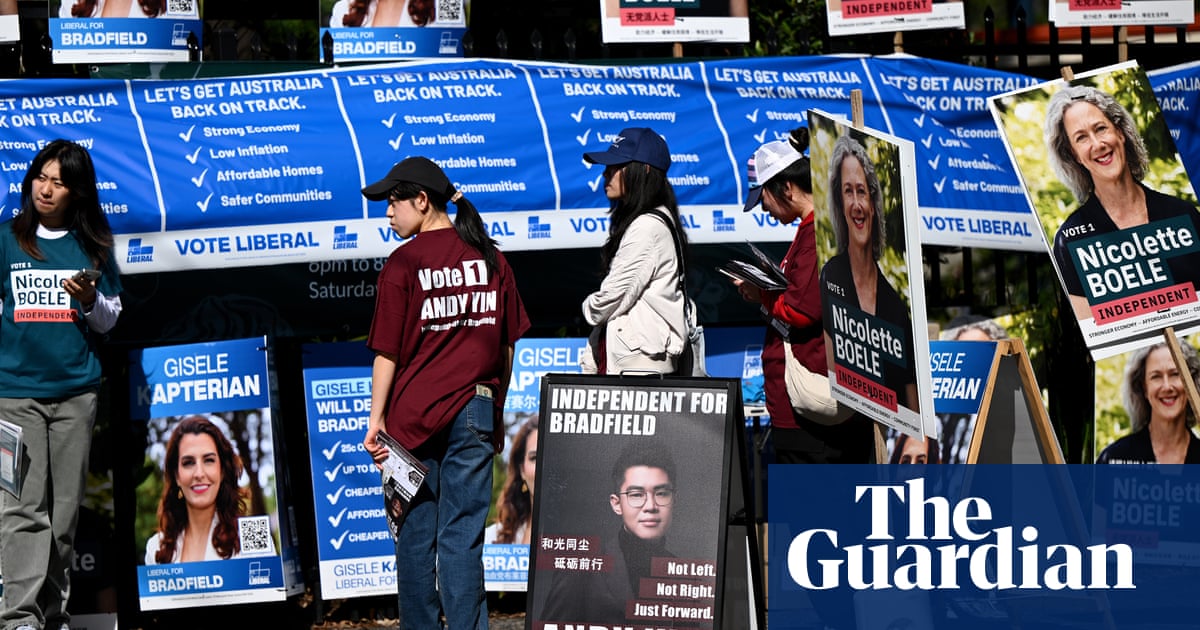The 2025 federal election was historic in many ways.
It delivered the most dominant Labor win in decades, and threw up some of the closest-ever contests in seats such as Bradfield and Goldstein.
Tim Wilson was declared the winner by fewer than 150 votes in Goldstein, in inner-Melbourne, but in Bradfield the full distribution of preferences left Liberal Gisele Kapterian only eight votes ahead of her opponent, independent candidate Nicolette Boele. A recount will be needed to confirm the winner of the inner-Sydney seat.
It’s not the first time voters have spent weeks waiting for a result or that just a handful of ballots have determined who becomes the MP.
Here are a few of the more recent examples of extremely close counts.
The last time the Australian Electoral Commission (AEC) did a ballot recount was 2016, in the Queensland seat of Herbert, based around Townsville.
Voters had to wait nearly a month after election day (2 July) to finalise their new local member.
Sign up for Guardian Australia’s breaking news email
At the end of the two-candidate preferred count between Labor’s Cathy O’Toole and the LNP’s Ewan Jones, who had held the seat since 2010, O’Toole was just eight votes ahead.
The AEC went to a recount on 21 July, 19 days after polling day. Ten days later, O’Toole was declared the winner by 37 votes.
Speaking during the recount,O’Toole said: “I won’t say it hasn’t been stressful at times … For me, it’s put a whole new spin on the term ‘down to the wire’.”
In 2013, there was a recount in another Queensland seat, Fairfax, on the northern Sunshine Coast.
The seat had been held by the Liberals since 1990, but in 2013 the new LNP candidate, Ted O’Brien – now the party’s deputy leader – faced an upset at the hands ofClive Palmer.
At the end of the two-candidate-preferred count, Palmer was just seven votes ahead, prompting a recount.
It turned into one of the longest ever, as Palmer’s scrutineers challenged so many of his opponent’s votes.
Kevin Bonham, a psephologist, says this level of vote challenging is uncommon.
“They weren’t challenging every adverse vote, but they were challenging most of them, and that is unusual,” he says.
“Normally, the number of votes challenged is quite a small proportion … experienced scrutineers know that there are some votes where there’s no point in challenging … because they know it’s going to waste the AEC’s time.”
The 2013 election was held on 7 September. The recount began on 3 October and did not finish until four weeks later.
Palmer won the seat by 53 votes. He didn’t run in the next election, and O’Brien has held it since.
Before that, the most recent recount was in 2007, in the seat of McEwan, north-west of Melbourne.
At the end of the two-candidate-preferred count, Labor’s Rob Mitchell was six votes ahead of the Liberal MP, Fran Bailey, who had held the seat for more than a decade.
Sign up toBreaking News Australia
Get the most important news as it breaks
after newsletter promotion
Bailey asked the AEC to perform a recount, which found she had won the seat by 12 votes.
Mitchell says he was “pacing up and down the corridor” during that recount, with candidates not allowed in the room.
“For the candidate, obviously your stress levels are through the roof because you know there’s nothing you can do,” he says.
The 2007 election was held on 24 November, the recount began on 12 December, and the AEC declared the seat for Bailey on 21 December.
Mitchell then challenged the result in the special court of disputed returns, heard by high court justices.
He claimed voters’ intentions in many of the 640 rejected ballots were clear, even though their handwriting was poor. But the application was dismissed, and Bailey retained the seat until she retired before the 2010 election, when Mitchell won. He has held the seat since.
Before becoming an MP, Mitchell had also been a scrutineer for other Labor candidates and says the atmosphere was “intense”.
“Your object is to knock out as many of the other person’s [votes] as you can … it’s very intense, you’ve got the AEC counters there trying to do their job and you’re standing looking over their shoulders. You can’t touch the table, you’re not allowed to touch a ballot paper, and you’ve got to be very short and succinct when you’re talking to staff.”
There has been only one occasion when a seat decided by a few votes helped determine the whole election.
It was 1961 and the Liberal MP in the south-east Queensland seat of Moreton, James Killen, was holding off a challenge from Labor.
He won by just 130 votes, which urban myth says came as a result of preferences from the Communist party, but others say came from preferences from the DemocraticLabor party, which had split from the ALP in 1955.
Bonham says it was preferences from both that got Killen over the line.
“The Communist candidate actually helped the Labor candidate more than Killen … but a small number of [Communist preferences] went to the Liberals,” he says.
“If they had flowed 100% to Labor, Labor would have won the seat, and that would have tied the election, and then you would have had a very interesting situation.”
As it was, Robert Menzies led the Liberal-Country Coalition to a two-seat majority, despite Labor, under Arthur Calwell, collecting 47.9% of the primary vote. It would take Labor another 11 years to gain government under Gough Whitlam.
